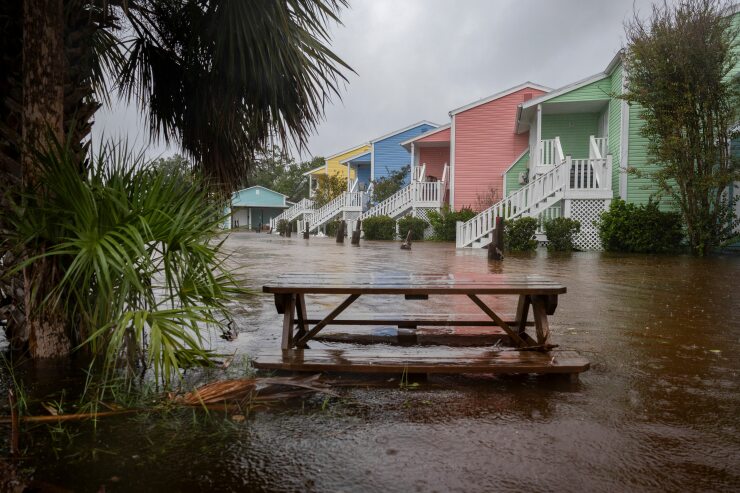
The Federal Housing Finance Administration launched a new online tool aimed to help the home finance industry best determine
The FHFA's mortgage loan and natural disaster dashboard can provide details based on different sets of criteria to identify specific communities and borrowers most vulnerable to climate-related events, including hurricanes, floods and wildfires.
Among the information investors and other stakeholders can find alongside climate data is whether loans are held by Fannie Mae, Freddie Mac or
"Climate risks, especially natural disasters, pose a serious threat to housing and other critical infrastructure, particularly in vulnerable communities," said FHFA Director Sandra Thompson, in a press release.
"Providing geographic information on disasters as well as concentrated exposures of loans acquired by our regulated entities can help policymakers and the industry develop solutions to better safeguard those communities from the impact of future catastrophes."
Through the online tool, users are able to combine information in the FHFA's public database with data and analysis from the Federal Emergency Management Agency for areas as small as individual census tracts. Details from FHFA's Duty to Serve 2023 high-needs rural areas data are also included for the communities it covers.
In a look at 2022 loans acquired by the government-sponsored enterprises or FHLBs within hurricane-prone areas, 5.22% of single-family mortgages were found to be located in what were considered very high risk tracts. Total unpaid balance of those mortgages equaled $60.8 billion.
Just below that tier, single-family mortgages in census tracts at high hurricane risk accounted for 7.22%, or $84.1 billion, of 2022's acquisitions.
Earlier this year, Corelogic
Delinquencies immediately spiked in the Houston area in July in the aftermath of Hurricane Beryl, the first named storm of the season to make landfall in the U.S. this year, according to Intercontinental Exchange. Its ICE Mortgage Technology unit found the
Typically, following a destructive hurricane, late payments spike because of both property damage and job loss, but most borrowers are able to quickly cure.
Initial estimates of damage from Beryl came in between $700 million and $1.5 billion, Corelogic said.
Damage caused by hurricanes in 2023 ran between $3 and $4 billion, one of the quietest seasons in recent history, according to NOAA.


